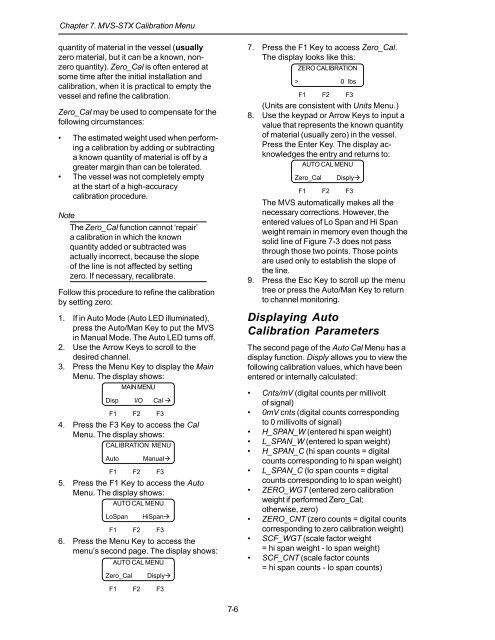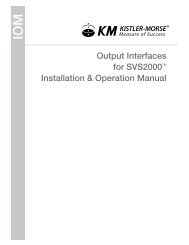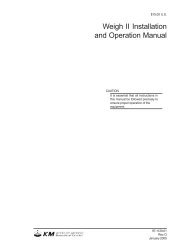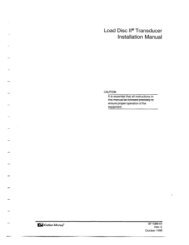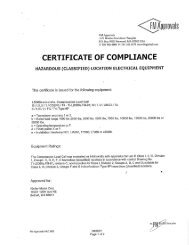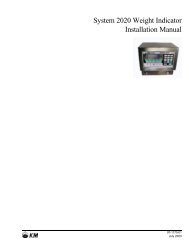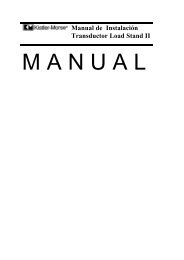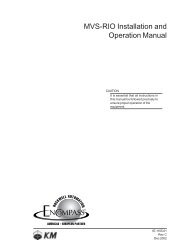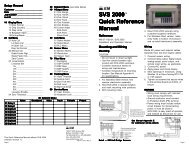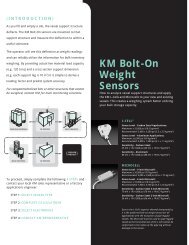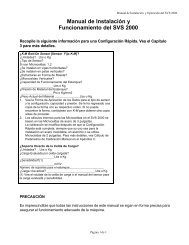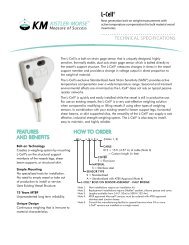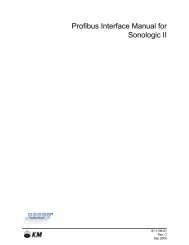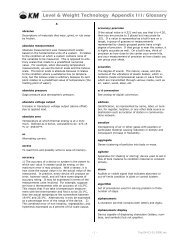STX Signal Transmitter Installation and Operation ... - Kistler-Morse
STX Signal Transmitter Installation and Operation ... - Kistler-Morse
STX Signal Transmitter Installation and Operation ... - Kistler-Morse
You also want an ePaper? Increase the reach of your titles
YUMPU automatically turns print PDFs into web optimized ePapers that Google loves.
Chapter 7. MVS-<strong>STX</strong> Calibration Menu<br />
quantity of material in the vessel (usually<br />
zero material, but it can be a known, nonzero<br />
quantity). Zero_Cal is often entered at<br />
some time after the initial installation <strong>and</strong><br />
calibration, when it is practical to empty the<br />
vessel <strong>and</strong> refine the calibration.<br />
Zero_Cal may be used to compensate for the<br />
following circumstances:<br />
• The estimated weight used when performing<br />
a calibration by adding or subtracting<br />
a known quantity of material is off by a<br />
greater margin than can be tolerated.<br />
• The vessel was not completely empty<br />
at the start of a high-accuracy<br />
calibration procedure.<br />
Note<br />
The Zero_Cal function cannot ‘repair’<br />
a calibration in which the known<br />
quantity added or subtracted was<br />
actually incorrect, because the slope<br />
of the line is not affected by setting<br />
zero. If necessary, recalibrate.<br />
Follow this procedure to refine the calibration<br />
by setting zero:<br />
1. If in Auto Mode (Auto LED illuminated),<br />
press the Auto/Man Key to put the MVS<br />
in Manual Mode. The Auto LED turns off.<br />
2. Use the Arrow Keys to scroll to the<br />
desired channel.<br />
3. Press the Menu Key to display the Main<br />
Menu. The display shows:<br />
MAIN MENU<br />
Disp I/O Cal <br />
F1 F2 F3<br />
4. Press the F3 Key to access the Cal<br />
Menu. The display shows:<br />
CALIBRATION MENU<br />
Auto<br />
5. Press the F1 Key to access the Auto<br />
Menu. The display shows:<br />
AUTO CAL MENU<br />
LoSpan<br />
Manual<br />
F1 F2 F3<br />
HiSpan<br />
F1 F2 F3<br />
6. Press the Menu Key to access the<br />
menu’s second page. The display shows:<br />
AUTO CAL MENU<br />
Zero_Cal<br />
Disply<br />
7. Press the F1 Key to access Zero_Cal.<br />
The display looks like this:<br />
ZERO CALIBRATION<br />
> 0 lbs<br />
F1 F2 F3<br />
(Units are consistent with Units Menu.)<br />
8. Use the keypad or Arrow Keys to input a<br />
value that represents the known quantity<br />
of material (usually zero) in the vessel.<br />
Press the Enter Key. The display acknowledges<br />
the entry <strong>and</strong> returns to:<br />
AUTO CAL MENU<br />
Zero_Cal<br />
Disply<br />
F1 F2 F3<br />
The MVS automatically makes all the<br />
necessary corrections. However, the<br />
entered values of Lo Span <strong>and</strong> Hi Span<br />
weight remain in memory even though the<br />
solid line of Figure 7-3 does not pass<br />
through those two points. Those points<br />
are used only to establish the slope of<br />
the line.<br />
9. Press the Esc Key to scroll up the menu<br />
tree or press the Auto/Man Key to return<br />
to channel monitoring.<br />
Displaying Auto<br />
Calibration Parameters<br />
The second page of the Auto Cal Menu has a<br />
display function. Disply allows you to view the<br />
following calibration values, which have been<br />
entered or internally calculated:<br />
• Cnts/mV (digital counts per millivolt<br />
of signal)<br />
• 0mV cnts (digital counts corresponding<br />
to 0 millivolts of signal)<br />
• H_SPAN_W (entered hi span weight)<br />
• L_SPAN_W (entered lo span weight)<br />
• H_SPAN_C (hi span counts = digital<br />
counts corresponding to hi span weight)<br />
• L_SPAN_C (lo span counts = digital<br />
counts corresponding to lo span weight)<br />
• ZERO_WGT (entered zero calibration<br />
weight if performed Zero_Cal;<br />
otherwise, zero)<br />
• ZERO_CNT (zero counts = digital counts<br />
corresponding to zero calibration weight)<br />
• SCF_WGT (scale factor weight<br />
= hi span weight - lo span weight)<br />
• SCF_CNT (scale factor counts<br />
= hi span counts - lo span counts)<br />
F1 F2 F3<br />
7-6


